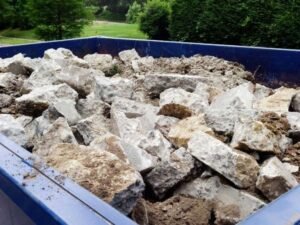Portland homeowners know that the weather here can be unpredictable. With heavy rain, damp winters, and occasional snowfall, your home’s siding takes a beating year after year. If your siding is old or damaged, it could be letting in moisture, causing hidden structural issues, or making your home less energy efficient.
Many don’t realize the damage until they see peeling paint, mold, or rising energy bills. If your siding is past its prime, ignoring the signs can lead to expensive repairs later. But how can you tell when it’s time for a full replacement?
This guide will walk you through the warning signs that your siding needs attention. If you spot these issues, replacing your siding might be the smartest way to protect your home and keep it looking great.
Cracks, Holes, or Warping Mean Trouble
If you see cracks or holes in your siding, it’s a sign of trouble. Small openings allow moisture to seep in, which can lead to rot or mold. Pests, like termites and rodents, can also squeeze through tiny gaps and nest inside your walls. Once they get in, getting rid of them is a bigger problem.
Warped siding is another red flag. When moisture gets trapped behind the siding, it can cause the panels to bend or bubble outward. Press on a warped section—if it feels soft or moves under pressure, there may be water damage underneath. At that point, patching up a few sections won’t be enough. A full replacement will be the best way to prevent further damage.
If your siding has visible cracks, holes, or warping, it’s time to consider a full replacement. A local Portland siding company can assess the damage and recommend the best siding materials to withstand the city’s rainy climate. Whether you need a more weather-resistant option or a complete upgrade, professional siding experts can help you find a solution that protects your home for years to come.
Constant Repairs Are Draining Your Budget
Some siding damage is minor and can be fixed easily, but if you find yourself calling a contractor every few months, the costs add up. Cracks, peeling, and loose panels might seem small at first, but frequent repairs can become a financial drain.
Older siding, especially wood, requires ongoing maintenance to prevent decay. If you’re constantly repainting or replacing small sections, it may be time to invest in a longer-term solution. Newer siding materials, like fiber cement or insulated vinyl, require little maintenance and last for decades. Instead of spending money on temporary fixes, replacing your siding can save you money in the long run.
Higher Energy Bills Could Be a Sign
Your home’s siding plays a bigger role in insulation than most people realize. When siding starts to fail, it lets cold air in during the winter and traps heat in the summer. This forces your HVAC system to work harder, leading to higher energy bills.
If you’ve noticed a steady increase in heating or cooling costs, your siding could be to blame. Older materials, like aluminum or wood, don’t insulate as well as modern options. Newer siding, especially those with built-in insulation, helps regulate indoor temperatures better. By upgrading to energy-efficient siding, you can reduce your energy use and lower your bills.
Water Stains and Mold Are Major Red Flags
If you see water stains, mold, or mildew on your siding, take it seriously. These stains indicate that moisture is getting trapped inside the panels. Over time, this can lead to serious structural damage.
Mold and mildew thrive in damp environments, and the local rainy climate makes it easy for them to spread. If left untreated, mold can move inside your home, leading to health problems like allergies or respiratory issues. Replacing your siding with a moisture-resistant option can prevent these risks and keep your home’s interior safe.
Peeling or Faded Paint Could Be Telling You Something
If your home’s exterior looks dull and worn despite frequent repainting, your siding may be the issue. High-quality siding should hold its color for at least 8-10 years before needing a fresh coat of paint. If yours fades, peels, or chips much sooner, it could mean the material is breaking down.
Faded siding also affects curb appeal. If you plan to sell your home, an outdated exterior can make it harder to attract buyers. Modern siding options, like pre-colored fiber cement, maintain their appearance for years without requiring paint. If you’re tired of repainting, a siding upgrade might be a better solution.
Unpleasant Drafts Inside Your Home Could Be a Clue
A drafty home isn’t just uncomfortable—it’s often a sign that your siding is no longer doing its job. If you feel cold air seeping in during the winter or notice certain rooms are harder to keep warm, your siding could be the problem.
Damaged or aging siding creates gaps that let air escape. This forces your heating and cooling system to work harder, leading to increased energy costs. While poor insulation and old windows can also contribute to drafts, siding plays a big role in keeping your home sealed. If you’ve noticed temperature inconsistencies, it might be time to consider a siding upgrade.
Pest Damage Can Lead to Bigger Problems
Siding should act as a protective barrier, keeping pests out of your home. If you notice small holes, chew marks, or signs of burrowing, insects or rodents may have made their way inside.
Wood siding is especially attractive to termites and carpenter ants. These pests tunnel through the material, weakening it from the inside. Once they get through the siding, they can move into your walls and cause even more damage.
Other pests, like birds or squirrels, can also find weak spots in siding and make nests inside your home. If you see signs of infestation, a siding replacement might be necessary to prevent further damage. Some modern siding materials are pest-resistant, making them a smart investment for long-term protection.
Siding does more than make your home look good—it protects it from moisture, pests, and extreme weather. If you’ve noticed any of the warning signs covered in this article, it’s time to take action. Ignoring damaged siding can lead to bigger problems, like mold growth, high energy bills, or structural decay.
Getting an inspection from a siding company can help you determine the best solution for your home. Whether you need a few repairs or a full replacement, upgrading your siding will improve your home’s durability, energy efficiency, and curb appeal. If your siding is showing signs of wear, don’t wait too long to address it. Taking care of the problem now can save you from costly repairs later.










